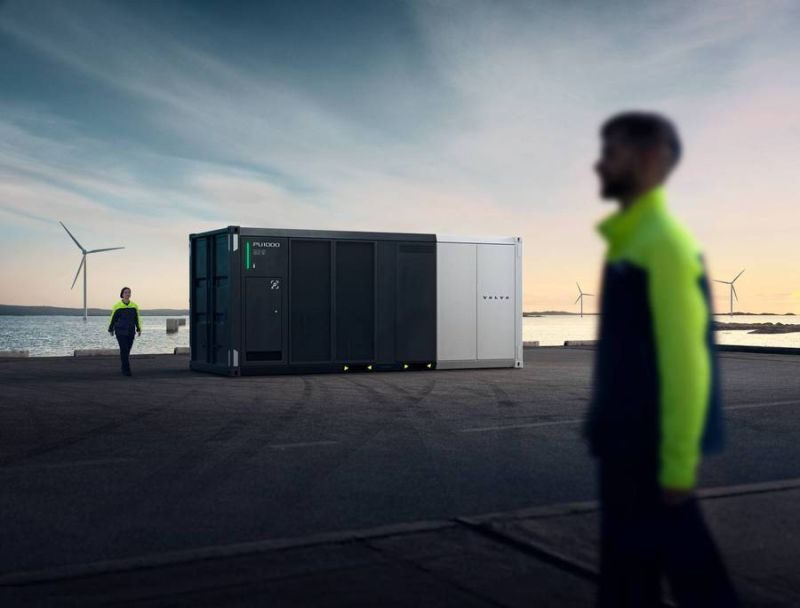Currently, the global penetration of battery-electric vehicles is still relatively small in comparison to the enormous population of internal combustion engines. But that is going to start to rapidly change, due to both current and upcoming regulations, as well as many companies’ desires to become effective environmental stewards. In an era where sustainability is at the forefront of global concerns, battery-electric vehicles have gained prominence as a key technology to reduce carbon emissions and fight climate change.
Although these batteries will have a long life, eventually their energy capacity will begin to diminish, and so the supply of recyclable batteries that will need to be processed is also going to rapidly increase. Plans to handle that influx must be solidified, and the entire value chain needs to mobilize now to make the shift possible. Volvo Energy, the newest part of the global Volvo Group, was created two years ago to address that shift and provide a new life for the growing volume of batteries as the company accelerates towards a future where most vehicles will have zero-tailpipe emissions. This approach goes beyond simply manufacturing batteries for its own vehicles and providing charging solutions for Volvo Group’s electric applications. It’s about creating a comprehensive ecosystem that reduces waste, reduces the need for new finite resources and minimizes the environmental impact of battery-electric technology.
Volvo Trucks has delivered approximately 6,000 electric vehicles since 2019 in 42 countries around the world, according to Roger Alm, president of Volvo Trucks. In order to meet its science-based sustainability targets, the company has a global commitment that by 2030, 50 percent of the vehicles sold will be battery electric — approximately 75,000 trucks. Each one of those vehicles will have between two and eight battery packs, so the on-road quantity of batteries is poised to expand exponentially.
Plans to give used batteries a second life are currently in development and are projected to be ready when a significant number of batteries are being retired on an annual basis. Because battery-electric trucks are likely to be the top choice for supply chain sustainability, based on efficiency compared to hydrogen, an estimated 300,000 new battery-electric heavy-duty trucks, buses and machines will be purchased every year by 2040. In a circular battery economy, that means eventually approximately 2.4 million battery packs will be repurposed on an annual basis, and capacity planning should rise to meet this opportunity.
“Batteries have become the most important part of the truck and are at the core of a circular transformation,” according to Elisabeth Larsson, head of sales and services for Volvo Energy. “The batteries in Volvo’s vehicles will be ideal to repurpose in battery energy storage because they have been so well cared for.”
Each battery is carefully monitored from the moment it is placed into a Volvo vehicle. The OEM’s electric trucks use intelligent charging — much like what is used in cell phones — to ensure the vehicle is not overcharged, in turn protecting the lifecycle of the battery. A digital twin of the battery uses AI to gather data and optimize the length of time it can stay in the vehicle, and once the data demonstrates that it has 80 percent or less of its capacity remaining, it will come out of the vehicle and begin the transformation to its new, second life. The AI will determine the best next step for the battery based on the performance of its first life.
Although these batteries will no longer be ideal for use in a vehicle, as they won’t charge as quickly or charge fully, or store the energy as efficiently, they can be repurposed for stationary energy storage for a variety of benefits. They can allow for off-peak charging of vehicles or be used as backup power for data centers. These batteries can also store excess renewable energy from wind or solar for use in microgrid applications, allowing the operator to tap into it later or sell the power for grid stability services. Batteries can also be remanufactured so that the battery pack is saved but the modules are changed out or refurbished by exchanging worn-out components.
Volvo Energy works closely with battery partners to review and develop new technologies to ensure the sustainable sourcing of materials. Volvo will open its own battery assembly plant in Ghent, Belgium, to provide the first-life batteries for all its battery-electric vehicles across the different applications as well as establishing a large-scale production plant for battery cells in Sweden. Battery development is energy intensive, so to ensure the sustainability of the full lifecycle, clean energy must also be used to produce the batteries. The new battery plant is also close to the powertrain facility to reduce emissions from transporting the batteries.
To make battery-electric vehicles a truly sustainable technology, not only do we need to ensure that they are charged with clean energy, but there needs to be a plan for battery recirculation to extract all the useful life in each battery and then safely recycle valuable minerals and dispose of any non-recyclable content when those batteries reach their end of life.
This type of advance planning for a future global environmental challenge is an example of the company’s embrace of the Swedish concept of “omtanke.” In English, it translates to “deep care for one another,” and Volvo is dedicated to building a better future and leading the transformation to zero emissions across all applications and brands.



